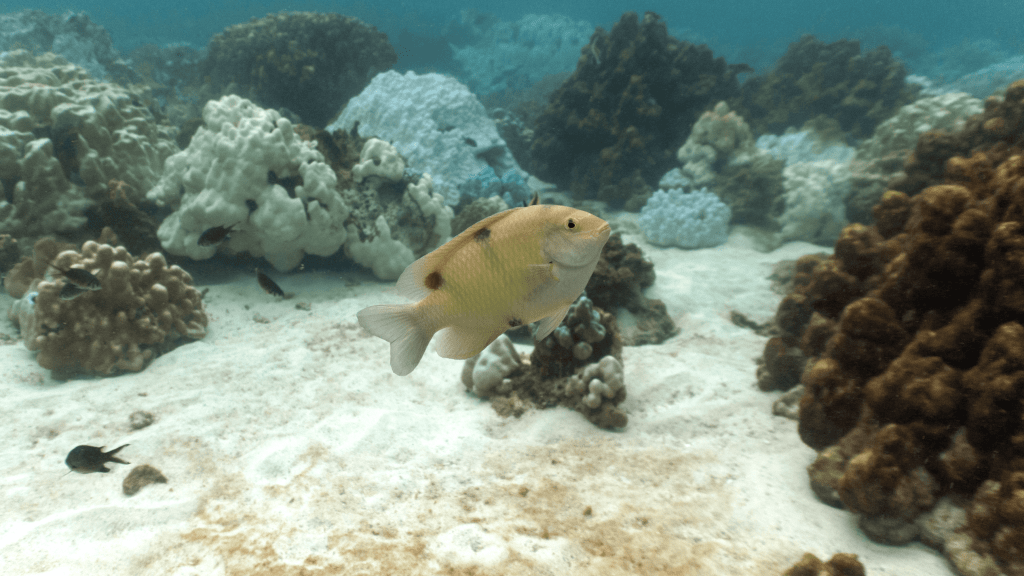White damsel
White damsel
Dischistodus perspicillatus does not have a widely accepted standard Russian name, but might be referred to by descriptive names like 'Damsel with striped eyes' or 'Striped Damsel'.
The White damsel (Dischistodus perspicillatus) is distinguished by noticeable bands on its head and around the eyes. Adults have a light-colored body with dark vertical bars running from the eyes towards the gills. These fish possess an oval, somewhat laterally compressed body, typical of members of the Pomacentridae family. Their length reaches about 14-16 cm. [Note: Other sources report larger maximum sizes]. Adults can also display bright colors, including shades of yellow and blue.
The White damsel inhabits the tropical waters of the Indo-Pacific, particularly around the Great Barrier Reef, Indonesia, and the Philippines. These fish prefer to live among coral reefs, at depths ranging from 1 to 15 meters, often in sheltered areas such as lagoons and inner reefs.

The White damsel is an omnivorous fish. Their diet includes algae, plankton, small crustaceans, and other invertebrates. These fish often graze on reefs, nibbling algae from coral surfaces and feeding on small organisms found within the coral structures.
Reproduction in Dischistodus perspicillatus occurs through spawning. Males build nests from algae and other materials on the seabed, where females lay their eggs. Males actively guard the clutch until the fry hatch, chasing away potential predators. The larvae drift in the plankton until they reach a stage where they can settle on the bottom and begin living among the corals.
The White damsel poses no danger to divers. These fish are not aggressive and not venomous. During the breeding season, males may exhibit territorial behavior while defending their nests, but overall they are harmless to humans.

